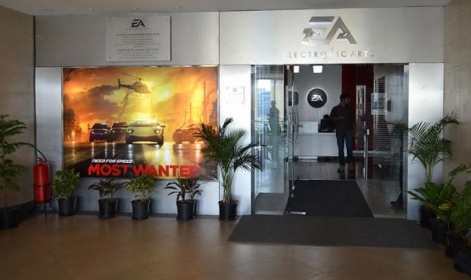The rise of India's games industry has been attributed in no small part to the smartphone gaming boom circa 2009.
But Amol Gurwara, Studio Director of EA's Hyderabad office, started working in mobile gaming before the App Store had even launched.
Prior to EA, Gurwara co-founded Aurona Technologies, a tech startup that had games as a secondary business.
The firm also had a London office, and worked with Codemasters and Kuju in the UK.
New challenge
But after the company was acquired in 2007, Gurwara received a call from EA about joining its new 60-member team in Hyderabad.
“I think it was a Fortune 500 company even then, and I felt that a company of this size can definitely do more in India,” he recalls to PocketGamer.biz at NASSCOM Game Developer Conference 2016.
“So I joined EA and we grew it all the way to 900.
“That was when there were feature phones in the market, so huge fragmentation and you needed a lot of engineering capabilities to port games over to different device sizes and capabilities.”
Staying alive
Of course, with the launch of the App Store in 2008, things changed. A fully-fledged games studio - Slingshot Games, part of EA Hyderabad - was established and has shipped “about 17 games so far”.
“We've since pivoted to a strategy where we own live services,” explains Gurwara.
“Big titles from EA Mobile, iconic brands which have a very large DAU base, and we're responsible for running these.”
One of these is Tetris Blitz, a game originally launched in 2013. For Gurwara and his team, the task is to keep these games moving with the times and modern mobile trends.
“We've evolved the game from one that was just single player, adding multiplayer components like tournaments and battles,” he says.
“And last year we worked with boutique British UX firm to completely re-architect the game from a visual standpoint.”
The result, he adds, is that the game is “still healthy”.
Multi-year success
This experience has solidified for Gurwara the idea that long-term success should be the ultimate aim for any developer.
“Dark Side of the Moon's been around since 1973, and that's what we need to aspire towards - making products that are remembered for decades,” he states.
Dark Side of the Moon's been around since 1973, and that's what we need to aspire towards.Amol Gurwara
This was the thrust of his talk at the Hyderabad conference: 'Producing Mobile Games for Multi-Year Success'.
“Everyone knows mobile is a business built on stolen moments,” he tells us.
“But what needs to happen now is that those stolen moments need to count for something… is the player evolving in that journey? Otherwise you remain a single-mechanic game without any depth.”
When delivering these talks to an indie-dominated crowd like the one at NGDC, Gurwara is conscious of appearing like the “guy from a big company” who's never experienced the independent struggle.
But he's keen to point out that he's seen both sides of the industry, and that his message applies to developers of all sizes. Simply, he says, it's about long-term planning.
“If your game right from the beginning is not well thought through, when you do see success, you don't know what to do,” he reasons.
Problems at home
Gurwara's talk concerned games for a global audience, but for Indian developers targeting the domestic market, there are different challenges entirely.
“The local market is still small, and I don't think the shape of the local market is going to be anywhere close to the western markets,” he considers.
“This is going to be a price-sensitive market with low intent to purchase. There needs to be other forms of monetisation.”

He identifies the “missing pieces” as being older gaming demographics - 55+ women and 35+ men, for example - that are critical in the west but undeveloped in India.
And while gaming is increasingly popular among India's younger generation, it will be a few years until they have the disposable income to be major drivers of revenue.
“Is that a two-year plan? I don't think so, I think it's going to take longer,” he says. “The question is what you're going to do until that happens.”
Tough solutions
While accepting their imperfections, Gurwara suggests that in-game ads are the best way to monetise in India right now.
Just having uninspiring display ads might get you impressions, but it does nothing for the brand.Amol Gurwara
However, these have their own challenges.
“Game developers need to make sure they're offering viable solutions to advertisers,” he says. “If advertisers don't get meaning from their spend, then the party's over before it begins.
“Just having display ads that are uninspiring might get you a lot of impressions, but it does nothing for the brand and it does nothing for the game.”
Instead, he argues, incentivised ads are the most user-friendly way forward.
“There are also a few companies working on native game integrations,” he adds.
“That should work. We know that sport, even cricket, adapts itself to advertising. There's no reason a video game should not.”

















